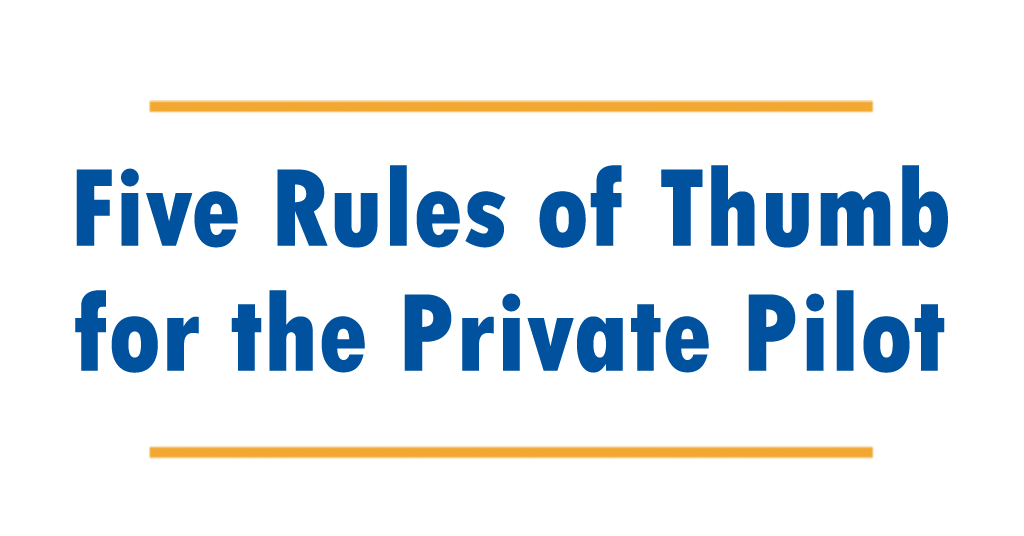If you ask any pilot for flying advice, regardless of their experience, you will most likely get an earful. Some of this advice is based on experience while most is based on hearsay and hangar flying.
When we discuss the five rules of thumb for private pilots, we are not saying these are the only rules of thumb. What we are saying is that these five areas are most significant from our perspective for both safety and the basic foundations of many critical flying skills.
Rule #1: When calculating the weight and balance for a flight, fuel should be added last. This may seem like common sense, but we do see many pilots who come in with their private pilot certificate and they automatically calculate full fuel without consideration for passengers or baggage. Once you determine your weight without fuel, you will be able to determine if the fuel allotted will be enough for your flight and reserves. When this is done, you can then determine what or who you will need to leave behind in exchange for more fuel.
Rule #2: Keep your crosswind control in all the way to touchdown. We see many pilots fly a stabilized approach in crosswind conditions only to remove the correction prior to touchdown. This usually results in the aircraft landing on either side of the centerline. This can also lead to a sideload condition on touchdown and in extreme circumstances, loss of control.
Rule #3: Count the airplanes in the pattern. Regardless of your experience level, you should always try to count the number of airplanes that are in the pattern. This not only helps your situational awareness but can help you avoid a near miss or worse.
Rule #4: You can always go around. These days it seems like the go-around maneuver is the last thing on pilots’ minds. For some reason, we see pilots who are 100% committed to getting the airplane on the ground no matter what. So how do you know if you need to go around? If you are at 200’ and not on the appropriate glide path, airspeed, or runway alignment, you should go around.
Rule #5: The combination of attitude and power determines the airplane’s performance. Attitude + Power = Performance. When you think about this formula, you should see that there is an ideal combination of pitch attitude and power to yield the desired performance. The performance may be airspeed, altitude, or rate of climb. What is most important is that you understand the various combinations for the aircraft that you are flying. Failure to do so may result in you chasing an airspeed or altitude making for a very uncomfortable and unstable ride. An example of this is configuring a Cessna 172 for a climb. We set the attitude just above the horizon and set the power to full. This configuration will yield a 500 fpm climb at 80 KIAS.










